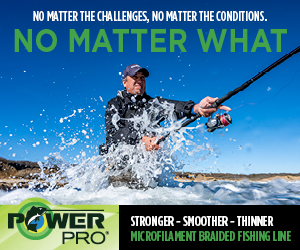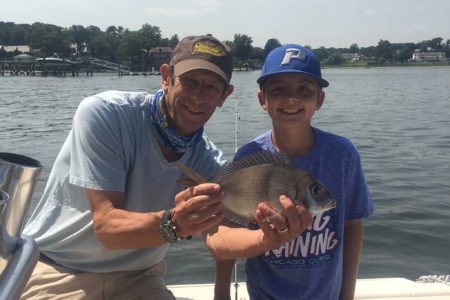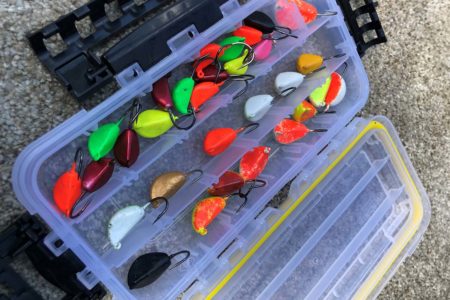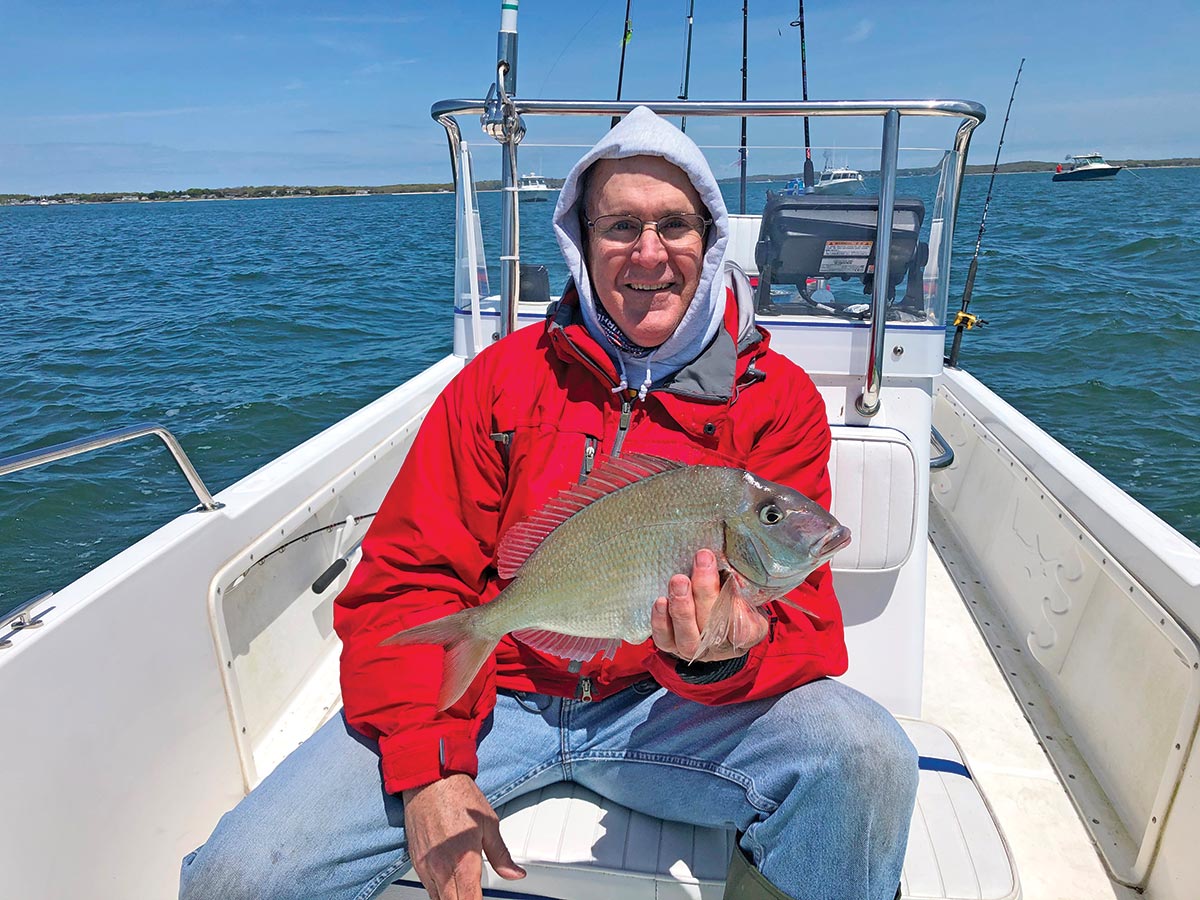
New technology continues to change the way we approach fishing for different species, including the humble but tenacious porgy.
Scup, porgy, the world’s best striper bait — no matter what you call it, this fish is pound-for pound one of the hardest fighting opponents in the Northeast. For decades, from North Jersey to Cape Cod, the standard protocol for targeting these scrappy saltwater panfish has been to use a high-low rig tipped with clam strips or sandworms on conventional outfits and heavy lead, as much as 10 ounces or more depending on the area. However, with new advancements in braid, coupled with extremely light yet powerful rods and reels, options for targeting porgies have vastly increased. Using this revolutionary tackle has specifically opened a new door that showcases the brute power of these fish by employing small metal jigs and hard baits from boat and beach.
The Discovery
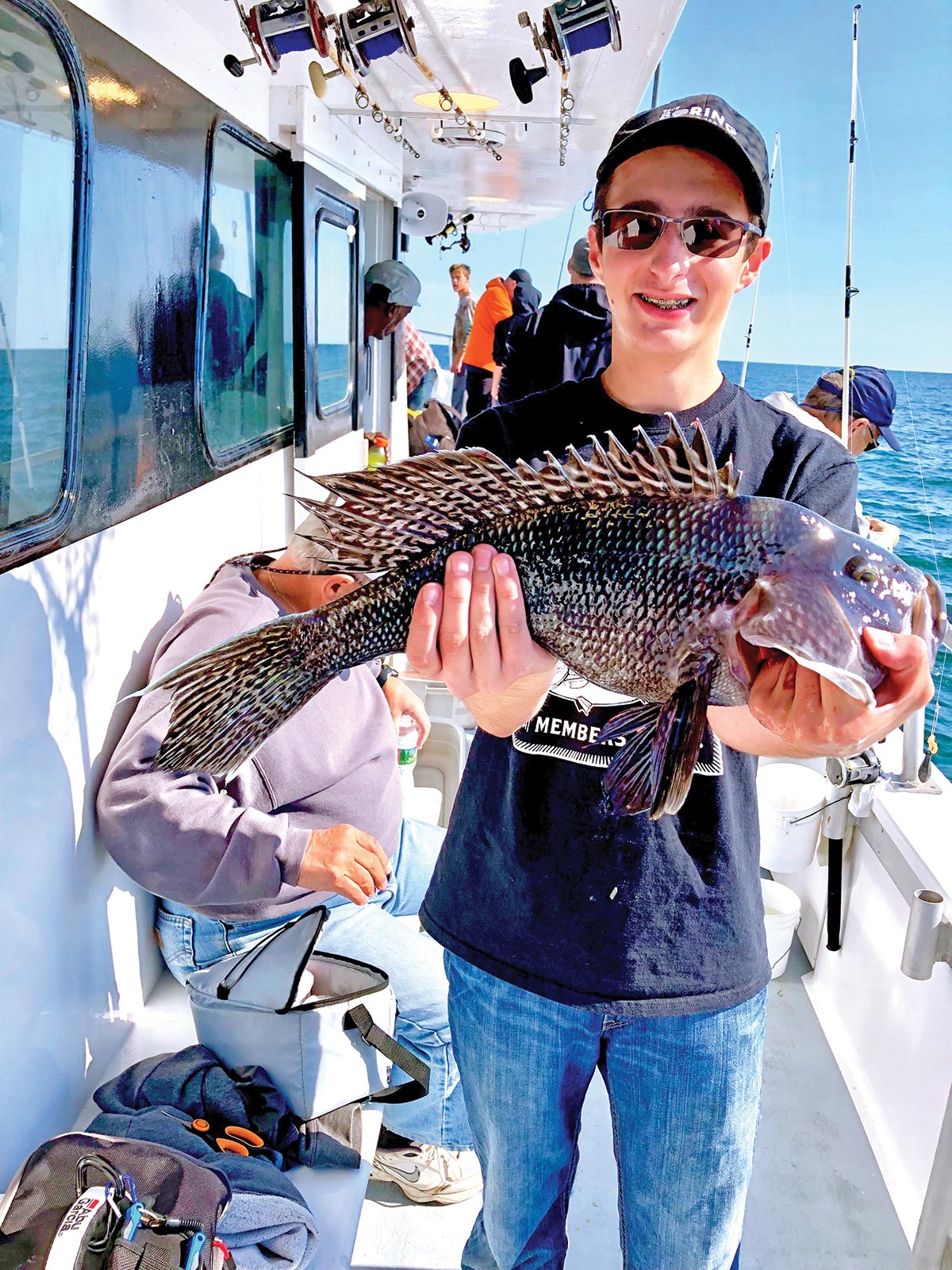
Like many North Shore kids growing up on Long Island, I await the start of the spring porgy run in my area every May. Once the warmer weather rolls in and overnight lows stay in the upper 50s, the bottom is seemingly paved with fish consistently until the snapper blues come in by mid-August and give us something new to keep busy with. A couple of years ago, as the day’s beach outing was wrapping up after a relatively slow trip, I decided to tie on a ½ ounce Hogy Heavy Minnow Jig during slack tide just to see what would happen. It was the first week in August, so snappers were just starting to reach a catchable size. I made my first cast, gave the reel a couple cranks, and bam — I hooked up to a fish that turned out to be a 22 inch porgy. In a half hour, I ended up catching another five, more than what I had to show for my last four hours of bait fishing.
My next few trips, I fished exclusively whatever metal jigs I had on me, worrying more about the weight than appearance. When casting from shore into approximately 8 to 10 feet of water, I never had to go above ¾ ounce. Even when the entire beach was packed and the bite had shut down for those fishing bait, my little metals were still “whacking and stacking” all the scup I could ask for. To me, this discovery was good enough, but there were new revelations when employing this tactic from a boat.
For many boatless anglers out there (myself included), party boats are an easy way to explore other waters and get the opportunity to test new techniques. While a nightmare for some and a dream for others, you can always count on two things when on a porgy party boat trip: bent rods and massive tangles. All it takes is one clueless person to get an entire side of the boat entangled in a mess of high low rigs in minutes. This is where having a light spinning setup shines. When my conventional rig got caught up in a tangle of 30-plus lines, I just broke out my trusty jig and started casting from the bow. By the time everyone was untangled and back in the water, I had already boated another four fish. Almost immediately, the mates took interest in my rather unconventional approach. We were in roughly 15 to 17 feet of water when one of them joked with me as I cast out my 1-ounce metal, saying, “Throw on a plug, see what bites.” That’s exactly what I did. Being that this was a scup trip, I didn’t have much in my bag, so I threw on a 4 ¾ inch-Rapala X-Rap Magnum that dove down to 15 feet. Low and behold, the porgy action continued with the addition of some substantial sea bass.
Light Tackle
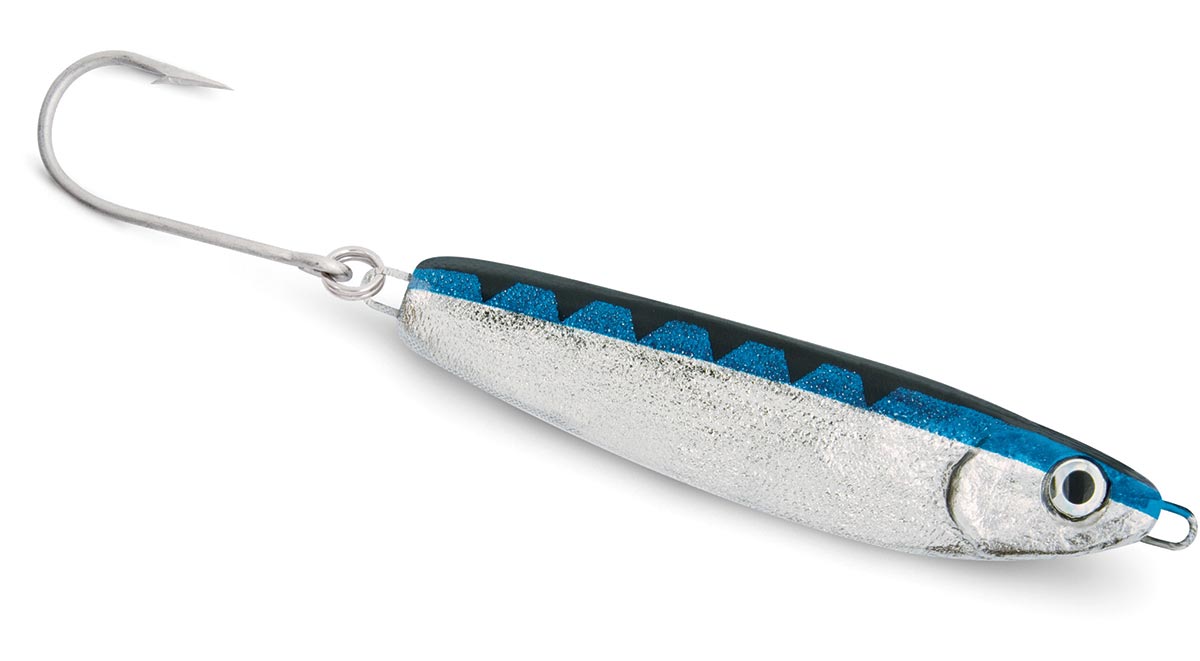
All of the previously mentioned situations would not have been possible without the use of ultra-modern tackle. For this fishing, gone are the days of monofilament or even 20 and 30-pound braid. This technique commands pushing your gear to the limit and really playing out the fish much like you would a blackfish or striper. If you are investing in your first setup for this style of jig fishing, stick with a cheaper rod to start and put the money into a reel. There are plenty of lightweight rods that don’t break the bank, but enjoying the setup in its purest form requires the use of a lightweight reel that has some serious power inside. In terms of choosing a rod, there are a couple strategies. If you want to keep things as light as possible, I personally fish a Shimano Clarus CSS66MHD, a 6-1/2-foot freshwater rod that is rated for lures up to ¾ ounce and retails for around $80. If you want to keep things a bit more economical, check out the Shimano Sojourn series, which goes for $30 to $35. The next rod class would be the slow pitch jigging family. These rods provide sizable backbone while still maintaining the featherweight feel. For this application, Tsunami is my choice in terms of price and quality. Take a look at either the Trophy Series Slow Pitch TSSPJS-661MH or the Slimwave SWSPS701-MH. The first is more of a traditional jigging spinning rod great for the boat while I personally like the latter choice for beach due to its whippy nature that can easily sling lighter jigs into deeper water.

When selecting a reel to match with these rods, it is important to weigh the size and feel of the reel with the amount of maintenance it needs for consistent saltwater use. On the Clarus, I fish a Pflueger President 500 due to its compact size and economical price point, but still apply a preventative coat of grease and oil every couple of months to avoid issues even with freshwater rinses after every trip. For a similar fishing experience without the added hassle, explore reels like the Daiwa BG 1500 or 2000. This series in particular is touted for its rugged design and ability to stand the test of time for saltwater use. For the slow pitch rods, most 2500-3000 size spinning reels will get the job done, but this is an area where you definitely get what you pay for. Not only will putting more money towards a reel upfront make for a more enjoyable experience on the water, but it also can eliminate headaches with repairs and maintenance later on down the road. Again, to keep the weight down, I gravitate towards reels with carbon composite bodies like the Daiwa Ballistic LT or Shimano Stradic Ci4+, but graphite reels will do just fine if you want to keep costs down.
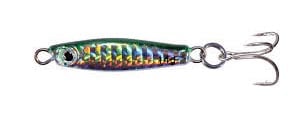
Picking out line is arguably the most important aspect of constructing this setup, as it is what allows you to use such light weight to reach the bottom. Monofilament is eliminated from contention due to its thick diameter that causes people to use too much lead in the first place. Even braided lines can be subdivided into more specific categories, though. From the beach, a coated braid like Powerpro Superslick V2 or Daiwa J-Braid x8 Grand is preferable to their classic counterparts due to increased casting distance, something that comes at a premium when fishing a 6½ to 7-foot rod. I generally stick with 10 to 15-pound braid because long distance casting with the lightest of braids can get frustrating rather quickly when dealing with wind knots and loops on the spool. From the boat, however, it is possible to drop down to 8 or even 6-pound test. The small decrease in diameter can make all the difference when trying to hold bottom with such light jigs. The absolute thinnest line is Berkley Nanofil. This product is made from the same material as braid, but molecularly fuses the strands together rather than actually braiding them. Whether using lightweight braid or Nanofil, you need to be wary of knots slipping out because of how thin these lines actually are. For this, I utilize a double palomar knot, which includes a second overhand wrap and is otherwise identical to its more familiar cousin.
Choosing Lures

My go-to metal jig for this fishing has been the Hogy Heavy Minnow Jig. The holographic shine on the sides of these lures seems to fire up the fish more than any other option that I have tested to date. The other great thing about this specific model is the sizing scale. Due to how dense these jigs are, weights between ½ ounce and 2 ounces are only 1.5 inches to 3 inches long, making them the perfect size to pick up scup and sea bass alike. These jigs can sometimes be a bit difficult to source when local shops aren’t stocking up on Hogy products for albies in the fall, but good alternatives would be metals like the Hopkins Shorty, Luhr Jensen Crippled Herring and Shimano Coltsniper in the appropriate size. All have models ranging from ¾ to 1.5 ounces and larger. If you are going to be fishing deep ocean waters where slightly beefier tackle and jigs up to 3 ounces can be applied, Shimano’s butterfly style jigs will catch not only porgies, but a host of other bottom species as well.
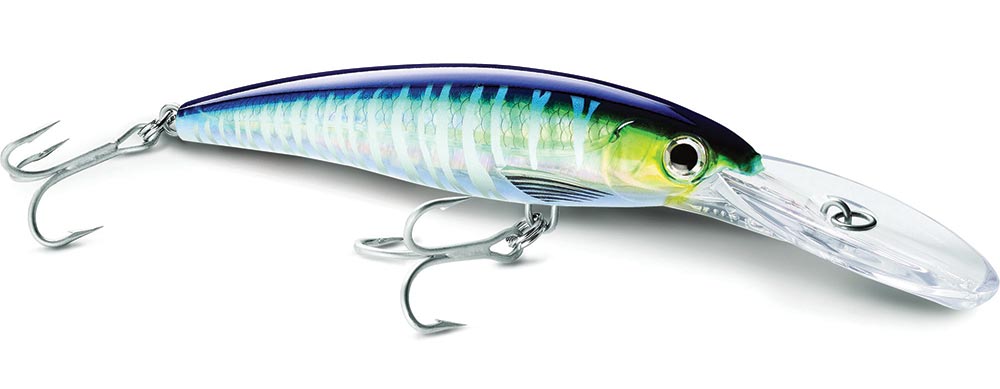
If wanting to go the route of jerkbaits and other hard baits, the main criteria for the perfect choice are having a compact size and deep diving capabilities. I have personally fished Rapala X-Rap Magnums up to 4 ¾ inches for some shallower action down to around 15 or 20 feet. When targeting porgies in water depths of 25 to 30 feet, I call upon the 4 inch Nomad Design DTX Minnow that dives to depths in the 23 to 27 foot range. Though these hard baits can get pricey, there is a bigger reward to be had, as you generally weed out scup under 15 inches and up your chances of connecting with knothead sea bass.

For ease of use, many anglers choose to swap out treble hooks for singles on their lures, and these little guys can definitely benefit from such customization. When looking for a replacement hook, it is necessary to think about the size of most of the fish you are going to encounter. I generally trend towards smaller hooks, choosing a size 1 or 2 Octopus style, which is small enough for most fish to get their mouths around without gut-hooking them because of its shape. The other advantage with changing out hooks is that it allows you to easily fish bait on them if the bite otherwise shuts down. While these lures can generally be fished as is with great success, certain situations can call for some adjustments. During slack tide, porgies can become super finicky, so providing them with a moving, flashing jig tipped with a bit of clam can help to sweeten the offering when nothing else is firing up the bite.
The summer season offers anglers innumerable opportunities to hit the water, so get out there and try something new. Get creative with your jig selections and think outside the box, a ¾-ounce bucktail with a small Otter Tail or Fat Cow Strip, maybe? There’s only one way to find out!
